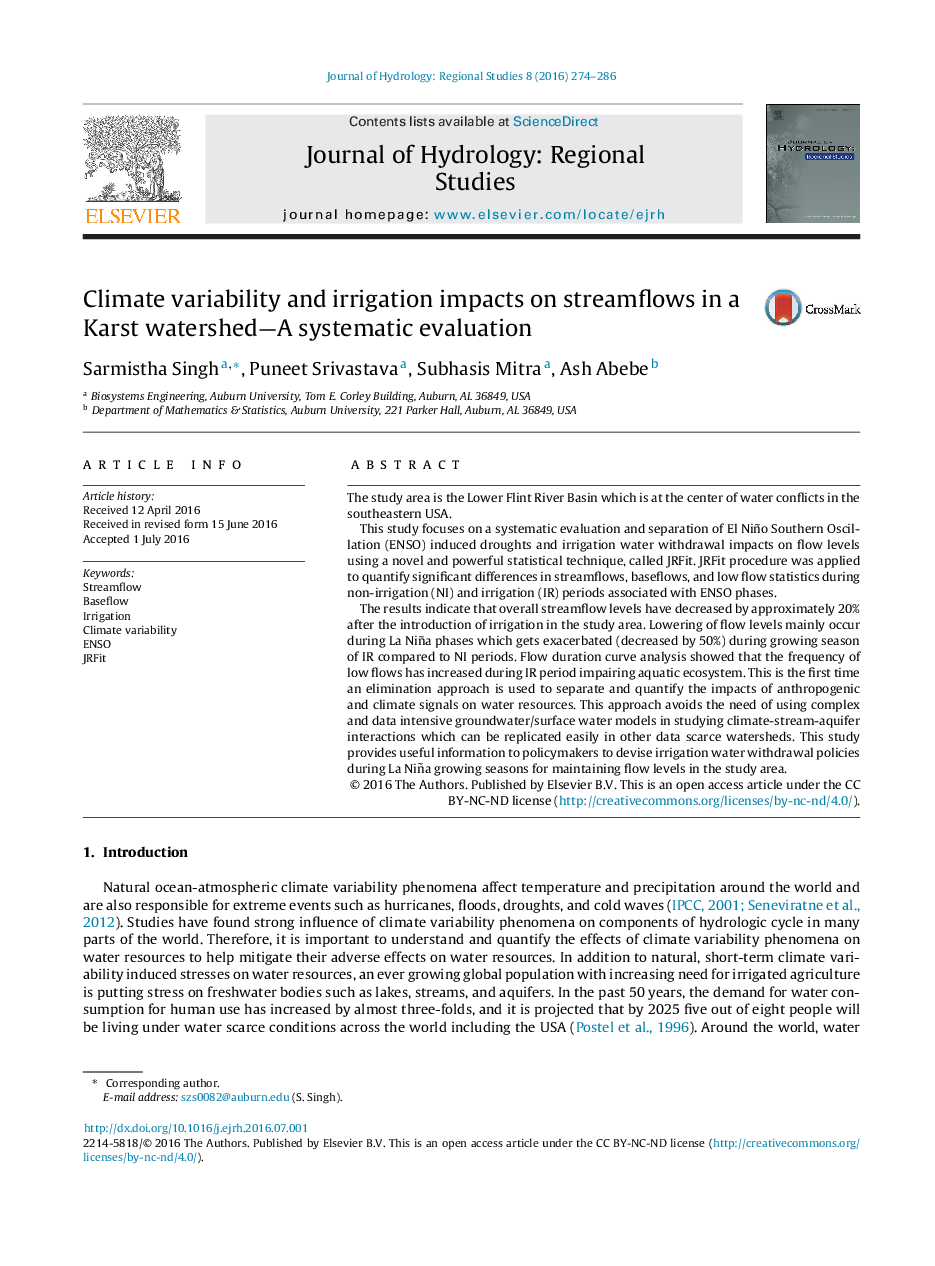| Article ID | Journal | Published Year | Pages | File Type |
|---|---|---|---|---|
| 8862915 | Journal of Hydrology: Regional Studies | 2016 | 13 Pages |
Abstract
The results indicate that overall streamflow levels have decreased by approximately 20% after the introduction of irrigation in the study area. Lowering of flow levels mainly occur during La Niña phases which gets exacerbated (decreased by 50%) during growing season of IR compared to NI periods. Flow duration curve analysis showed that the frequency of low flows has increased during IR period impairing aquatic ecosystem. This is the first time an elimination approach is used to separate and quantify the impacts of anthropogenic and climate signals on water resources. This approach avoids the need of using complex and data intensive groundwater/surface water models in studying climate-stream-aquifer interactions which can be replicated easily in other data scarce watersheds. This study provides useful information to policymakers to devise irrigation water withdrawal policies during La Niña growing seasons for maintaining flow levels in the study area.
Related Topics
Physical Sciences and Engineering
Earth and Planetary Sciences
Earth-Surface Processes
Authors
Sarmistha Singh, Puneet Srivastava, Subhasis Mitra, Ash Abebe,
